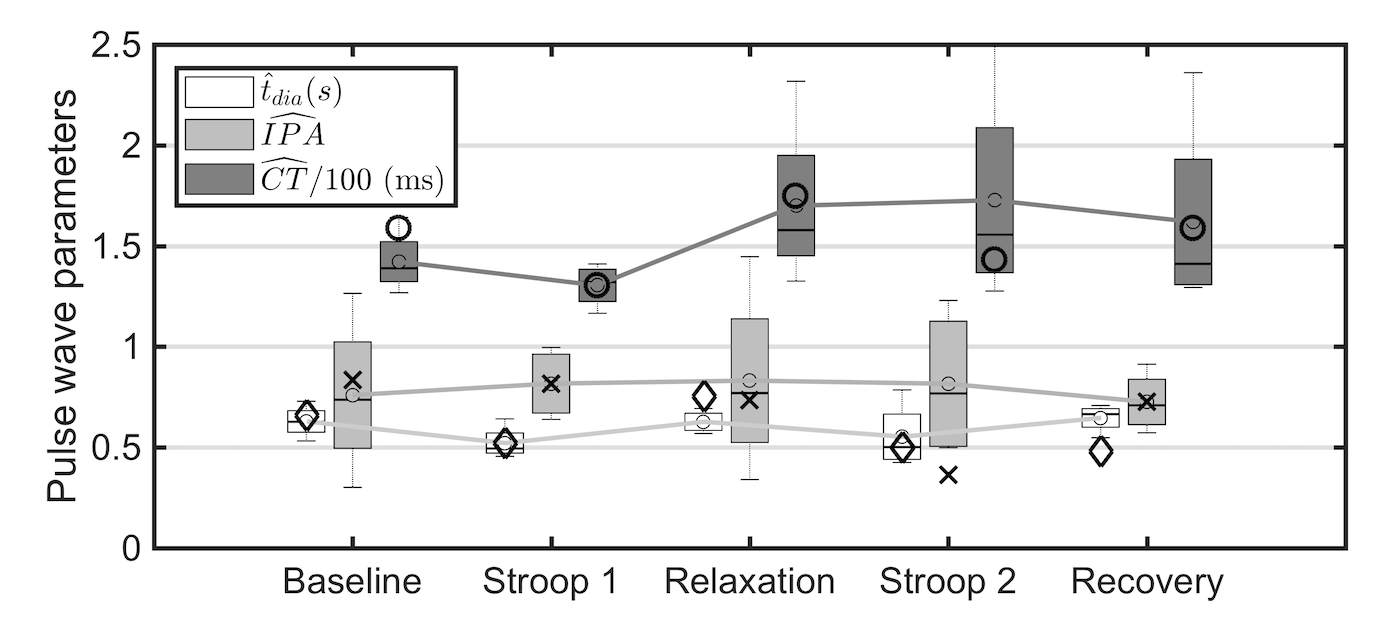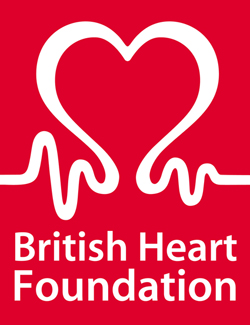Assessing Mental Stress from The Photoplethysmogram
Mental stress is detrimental to cardiovascular health, being a risk factor for coronary heart disease and a trigger for cardiac events, as well as causing several physical and mental illnesses. However, it is not routinely assessed in clinical and home settings. We are studying features of the photoplethysmogram (the so-called PPG pulse wave; a measure of how arteries expand and contract with each heartbeat) that are indicative of stress and enable calculation of a "PPG index" of mental stress. This would have great utility since the PPG signal is frequently acquired in healthcare using pulse oximeters (to measure blood oxygen saturation and pulse rate) and can be obtained by a wide range of ubiquitous devices such as smartphones, smartwatches and tablets (Proc IEEE, 2022).
 We have found three PPG pulse wave features that vary with haemodynamic changes associated with stress using computational modelling (Physiol Meas, 2018): the (i) time from pulse onset to peak (CT), (ii) duration of diastole (t_dia), and (iii) ratio of systolic to diastolic areas (IPA). In addition, we found that a greater number of features were indicative of stress when measured at the radial artery than at the brachial or temporal arteries (e.g. IPA). This indicates that PPG measurements at the radial artery may provide superior performance for assessing stress. These findings should be of use to device designers when considering how to process PPG signals, and where to measure PPG signals, to assess mental stress. This study required the creation of a database of simulated pulse waves at six levels of mental stress as described here.
We have found three PPG pulse wave features that vary with haemodynamic changes associated with stress using computational modelling (Physiol Meas, 2018): the (i) time from pulse onset to peak (CT), (ii) duration of diastole (t_dia), and (iii) ratio of systolic to diastolic areas (IPA). In addition, we found that a greater number of features were indicative of stress when measured at the radial artery than at the brachial or temporal arteries (e.g. IPA). This indicates that PPG measurements at the radial artery may provide superior performance for assessing stress. These findings should be of use to device designers when considering how to process PPG signals, and where to measure PPG signals, to assess mental stress. This study required the creation of a database of simulated pulse waves at six levels of mental stress as described here.

We have also investigated changes in PPG pulse wave features in response to mental stress in 10 healthy subjects during a controlled laboratory stress and relaxation protocol conducted in the Clinical Research Facility at St Thomas' Hospital. This study showed that CT and t_dia responded significantly to increased mental stress and to a breathing relaxation procedure, complementing heart rate, heart rate variability, and pulse transit time as indices of stress (Healthc Technol Lett, 2020).
The feasibility of acquiring PPG data during daily living has been demonstrated in "The PPG Diary Pilot Study". The dataset and code used in this study are publicly available from here.

Stress quantification is challenging in the clinic and in daily living due to many confounding factors. Nevertheless, our results show the potential of using high-quality PPG sensors to develop a robust technique for PPG-based monitoring of mental stress.

We have also investigated changes in PPG pulse wave features in response to mental stress in 10 healthy subjects during a controlled laboratory stress and relaxation protocol conducted in the Clinical Research Facility at St Thomas' Hospital. This study showed that CT and t_dia responded significantly to increased mental stress and to a breathing relaxation procedure, complementing heart rate, heart rate variability, and pulse transit time as indices of stress (Healthc Technol Lett, 2020).
The feasibility of acquiring PPG data during daily living has been demonstrated in "The PPG Diary Pilot Study". The dataset and code used in this study are publicly available from here.

Stress quantification is challenging in the clinic and in daily living due to many confounding factors. Nevertheless, our results show the potential of using high-quality PPG sensors to develop a robust technique for PPG-based monitoring of mental stress.



